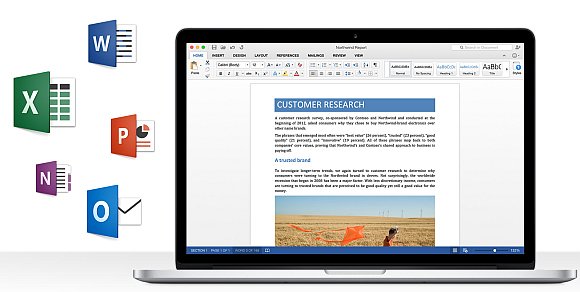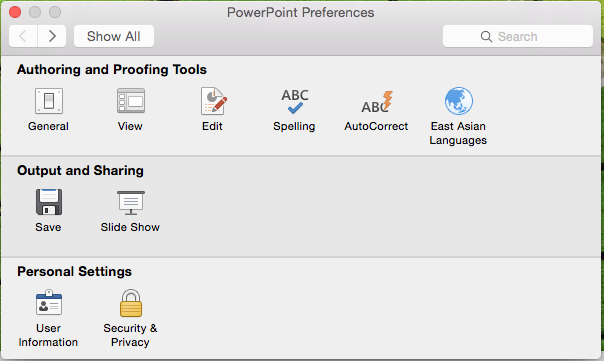-->
- Buy Office 2016 For Mac
- Microsoft Office 2016 Mac Download
- Ms Office 2016 Mac
- Microsoft Office For Mac 2016
- Download Office 2016 Mac
- Office 2016 Mac Os
Use email templates to send messages that include information that infrequently changes from message to message. Compose and save a message as a template, and then reuse it when you want it. New information can be added before the template is sent as an email message. On the Home tab, in the New group, click New E-mail. Office 2016 and 2019 for Mac In Word, choose WordPreferencesFile Locations. Select the Workgroup templates line, then click on the Modify button. In the dialog that opens, use the window controls to navigate to the folder. Open the POTX template you want to set as the default Click File / Save As Click the file type drop down and select PowerPoint Template (.potx). This will automatically change the folder location to your personal templates folder.
This download includes the Group Policy Administrative Template files (ADMX/ADML). These files are used by Group Policy to configure installations of Microsoft 365 products, such as Microsoft 365 Apps for enterprise, and volume licensed versions of Office 2019 and Office 2016.
Note
Office 365 ProPlus is being renamed to Microsoft 365 Apps for enterprise. For more information about this change, read this blog post.
Symptoms
By default, installations of Microsoft Office are configured to automatically update your Office installation when new updates are made publicly available. However, if you examine the Account section of the backstage, you may see that updates are disabled or that the command to manage updates is disabled or hidden. For example, the following figure indicates that updates are disabled in the backstage.
Cause

This issue occurs if updates have been manually disable or are managed through Group Policy settings.
Resolution
We recommend that you keep automatic updating enabled for Office installations because this configuration allows Office to automatically update with the latest fixes and security features. To re-enable automatic updates for Office, follow the steps below.
Manually configure automatic updates
If your Office installation is not managed by Group Policy, you can manually re-enable automatic updates by following these steps. If you cannot follow these steps because the Update Options control is disabled or missing, your updates are being managed by Group Policy.
- Start any program.
- On the File tab, select Account.
Note: In Outlook, select Office Account. - On the right side, select Update Options, and then select Enable Updates.
- If you are asked whether you want to let Microsoft Office make changes to your computer, select Yes.
Automatic updates managed by Group Policy
Warning
Follow the steps in this section carefully. Serious problems might occur if you modify the registry incorrectly. Before you modify it, back up the registry for restoration in case problems occur.
If you cannot follow the steps in the 'Manually configure automatic updates' section, this is because the Update Options control is disabled or missing due to a Group Policy. For example, the following figure shows the Update Options control when the Enable Updates option is hidden through a Group Policy:
To examine the registry data that is associated with the Group Policy settings which control this feature, follow these steps:
- Start Registry Editor. To do this, take one of the following actions:
- In Windows 10 or Windows 8, press the Windows key + X, select Run, type regedit in the Open box, and then press Enter.
- In Windows 7 and Windows Vista, select Start, type regedit in the Start Search box, and then press Enter. If you are prompted for an administrator password or for confirmation, type the password, or select Allow.
- Locate and then select the following registry key:
Note: If this key does not exist in your Registry Editor, see How to add the registry key via policy below.
Microsoft 365 Apps for enterprise, Office 2019, and Office 2016
HKEY_LOCAL_MACHINEsoftwarepoliciesmicrosoftoffice16.0commonOfficeUpdate
Office 2013
HKEY_LOCAL_MACHINEsoftwareWow6432Nodemicrosoftoffice15.0commonOfficeUpdate
- Examine the following registry values under the OfficeUpdate key:
- DWORD: EnableAutomaticUpdates
Values:
0 = automatic updates are disabled
1 = automatic updates are enabled - DWORD: HideEnableDisableUpdates
Values:
1 = hide the menu option to enable or disable automatic updates
0 = show the menu option to enable or disable automatic updates
- If you have any questions or concerns about these policy settings, see your domain administrator.
How to add the registry key via policy
The registry key is added automatically when you install ADMX/ADML files. To do this:
Buy Office 2016 For Mac
Microsoft 365 Apps for enterprise, Office 2019, and Office 2016
- Always download the LATEST admin templates to a location of your choice:Administrative Template files (ADMX/ADML) and Office Customization Tool for Microsoft 365 Apps for enterprise, Office 2019, and Office 2016
- Select the Download button.
- Select either the x64 or the x86 build.
- Select Run and follow the prompts to install the software.
- Copy the *.admx files into the C:/Windows/PolicyDefinitions/ folder.
- Copy the *.adml files from the language-locale subfolder (for instance, 'en-US') into the respective language-locale folder under C:/Windows/PolicyDefinitions/.

Warning
Be sure to preserve the same language-locale PolicyDefinitions folder which is applicable to your environment.
Office 2013
.svg/1200px-Microsoft_Office_logo_(2019–present).svg.png)
- Go to the Office 2013 Administrative Template files (ADMX/ADML) and Office Customization Tool page.
- Select the Download button.
- Select either the x64 or the x86 build.
- Select Run and follow the prompts to install the software.
- Copy the *.admx files into the C:/Windows/PolicyDefinitions/ folder.
- Copy the *.adml files from the language-locale subfolder (for instance, 'en-US') into the respective language-locale folder under C:/Windows/PolicyDefinitions/.
Warning
Be sure to preserve the same language-locale PolicyDefinitions folder which is applicable to your environment.
After you copy the Administrative Template files to AD DS, you'll find the update policy settings under Computer Configuration > Policies > Administrative Templates > Microsoft Office 2016 (Machine) > Updates in the Group Policy Management Console. You'll also find a description of how to configure each policy setting.
Microsoft Office 2016 Mac Download

More information
For more information about configuring the update settings via GPO, see Configure update settings for Microsoft 365 Apps for enterprise.
Target audience and introduction
This article is for users and IT administrators. In the first part, we’ll show users how to set the default template on their PC. In the second part, we’ll show how IT admins can deploy the default template to PC users across their organisation. For Mac users, refer to the section at the end of this article.
The default template in PowerPoint is a special file. It is the template that it used to create the blank presentation you see each time you start PowerPoint. In organisations with their own template, it saves a lot of time if that template is presented to users each time PowerPoint starts. Somewhat confusingly, the default template is called blank.potx and it resides in the user’s documents area here:
%appdata%MicrosoftTemplates
The %appdata% part is an alias (or shortcut) which resolves to a unique user location on every PC. For example:
C:UsersJohnSmithAppDataRoamingMicrosoftTemplates
This special location for blank.potx should not be confused with the separate location for custom (aka personal) templates which may be the same location or one of these:
Ms Office 2016 Mac
C:UsersUserNameDocumentsCustom Office Templates
It may also be a completely different location since it can be set by the user in the backstage under File / Options / Save as shown below (for PowerPoint 2016)
How users can set the default template
Setting the default template requires two things:
- The right file name : default.potx
- The right location : %appdata%MicrosoftTemplates
To set the default template
- Start PowerPoint
- Open the POTX template you want to set as the default
- Click File / Save As
- Click the file type drop down and select PowerPoint Template (*.potx). This will automatically change the folder location to your personal templates folder. DO NOT SAVE It HERE!
- Now click More options… (PowerPoint 2016) which will open a file dialog name and replace the file name with %appdata%MicrosoftTemplates and hit return
- You should now see a folder that contains the file blank.potx
- You can optionally make a backup up of that file by selecting it, pressing Ctrl+C and then Ctrl+V
- Click the blank.potx file and then click the Save button to overwrite it
- Close PowerPoint
- Start PowerPoint to confirm your default template has changed

IT admins deployment of the default template
There are several methods but by far the easiest is to use an xcopy command in a logon script file. This is the simplest example:
You can then add command line switches as required. For example, to suppress UI messages:
Microsoft Office For Mac 2016
This can be extended to an enhanced script file that reports the success or failure of the xcopy process. Copy the following script to a batch file eg. setDefPOTX.bat, changing the serverFile value, and then run it in the user logon sequence:
Download Office 2016 Mac
PowerPoint:mac users
Things are slightly different on the Mac. There is no blank.potx but there is the concept of a Default Theme.thmx file. You can create a thmx file by saving your template from PowerPoint 2016(PC) or PowerPoint:mac 2011 but not PowerPoint:mac 2016. Click File / Save As and select the file format from the format drop down.
To set it as the default, save the file in the corresponding location according to your version of PowerPoint:
PowerPoint:mac 2016
/Users/username/Library/Group Containers/UBF8T346G9.Office/User Content/Themes/Default Theme.thmx
PowerPoint:mac 2011
Office 2016 Mac Os
/Users/username/Library/Application Support/Microsoft/Office/User Templates/My Themes/Default Theme.thmx
Note that in both of these cases, access to the Library folder on OSX is gained in Finder by clicking Go from the menu bar whilst holding down the alt key.